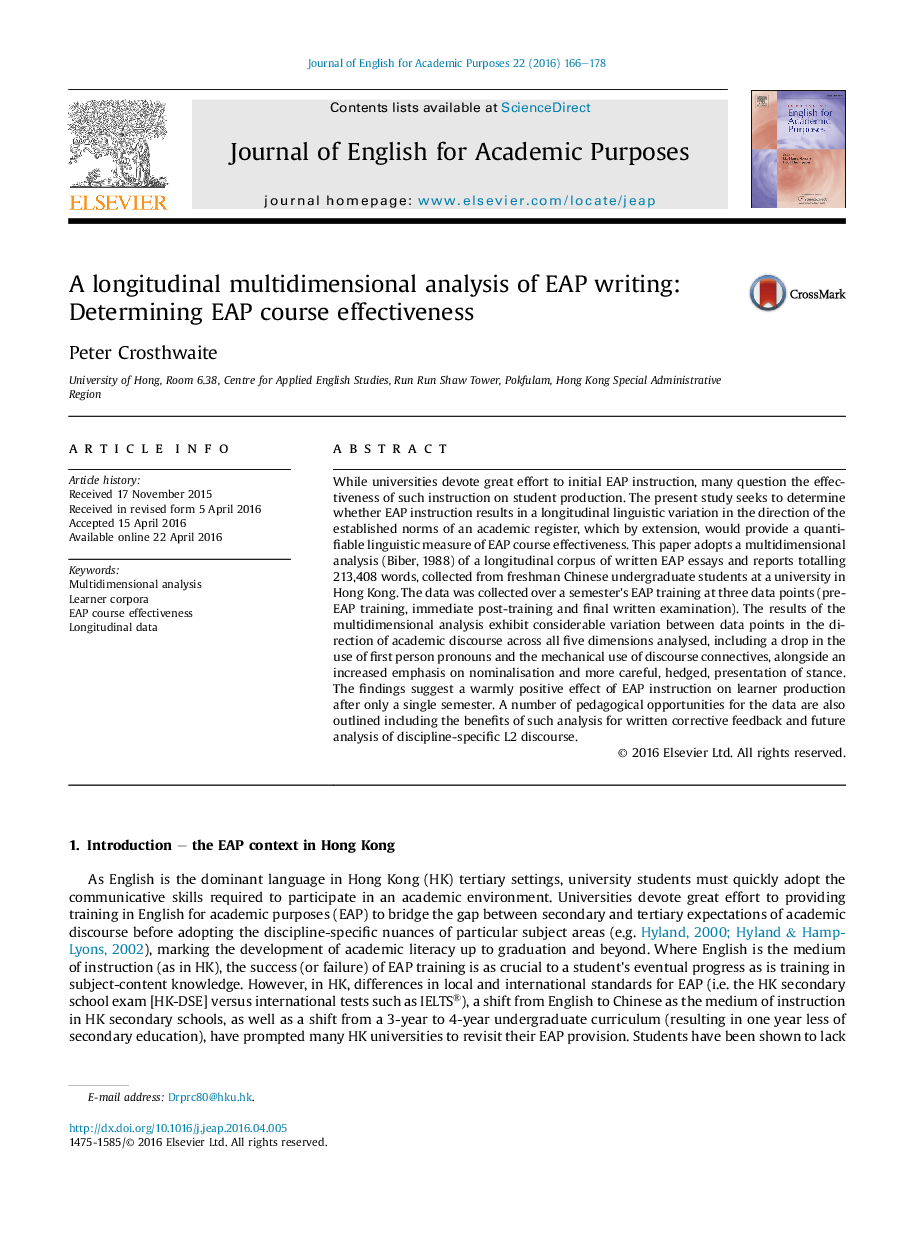| Article ID | Journal | Published Year | Pages | File Type |
|---|---|---|---|---|
| 360149 | Journal of English for Academic Purposes | 2016 | 13 Pages |
•A multidimensional analysis is performed to determine EAP course effectiveness.•L2 English corpus data from Asian students collected longitudinally over a semester.•Longitudinal linguistic variation found towards the norms of academic register.•Pedagogical opportunities included benefits for written corrective feedback.
While universities devote great effort to initial EAP instruction, many question the effectiveness of such instruction on student production. The present study seeks to determine whether EAP instruction results in a longitudinal linguistic variation in the direction of the established norms of an academic register, which by extension, would provide a quantifiable linguistic measure of EAP course effectiveness. This paper adopts a multidimensional analysis (Biber, 1988) of a longitudinal corpus of written EAP essays and reports totalling 213,408 words, collected from freshman Chinese undergraduate students at a university in Hong Kong. The data was collected over a semester's EAP training at three data points (pre-EAP training, immediate post-training and final written examination). The results of the multidimensional analysis exhibit considerable variation between data points in the direction of academic discourse across all five dimensions analysed, including a drop in the use of first person pronouns and the mechanical use of discourse connectives, alongside an increased emphasis on nominalisation and more careful, hedged, presentation of stance. The findings suggest a warmly positive effect of EAP instruction on learner production after only a single semester. A number of pedagogical opportunities for the data are also outlined including the benefits of such analysis for written corrective feedback and future analysis of discipline-specific L2 discourse.
